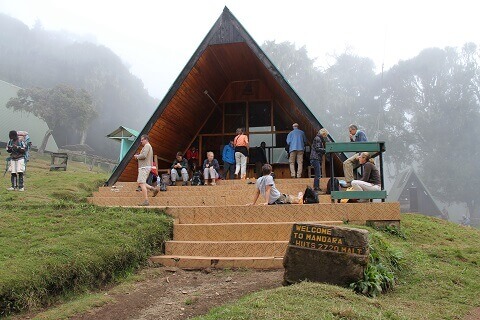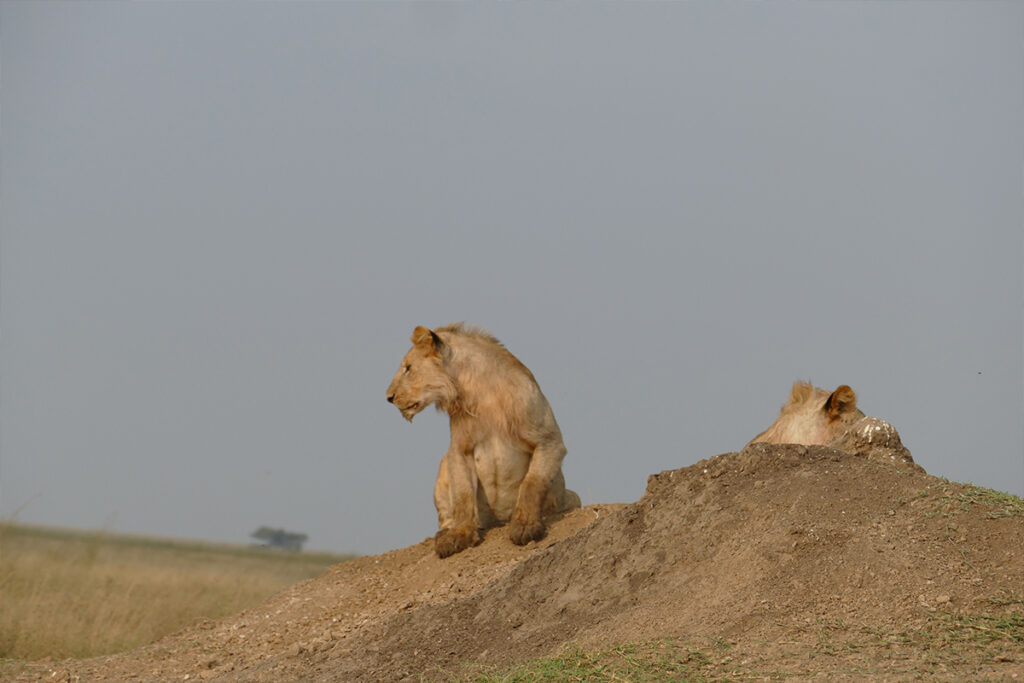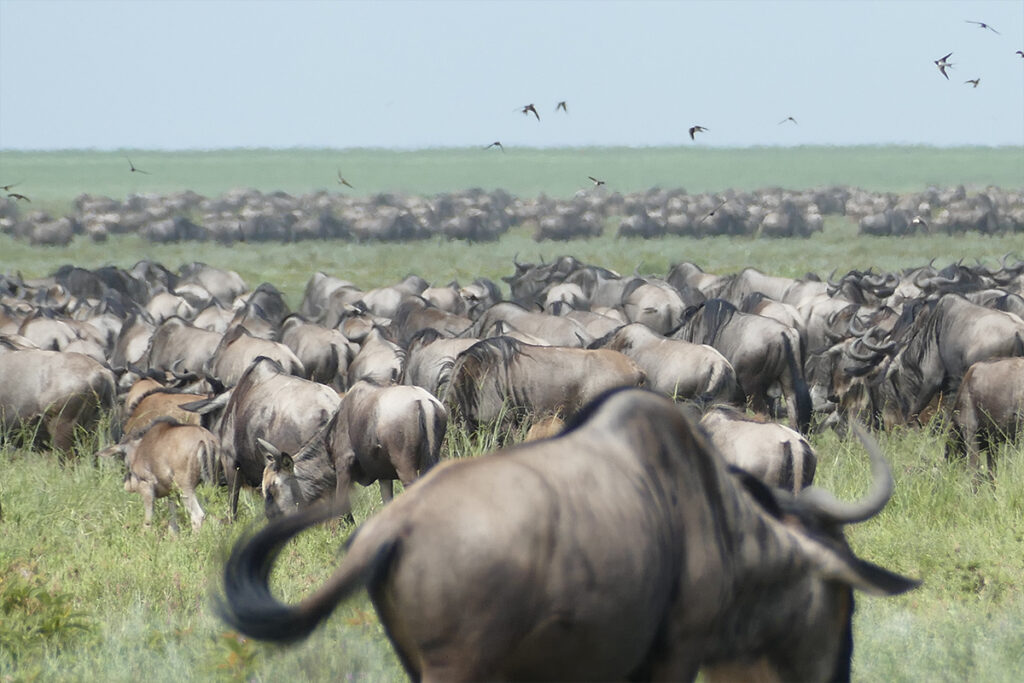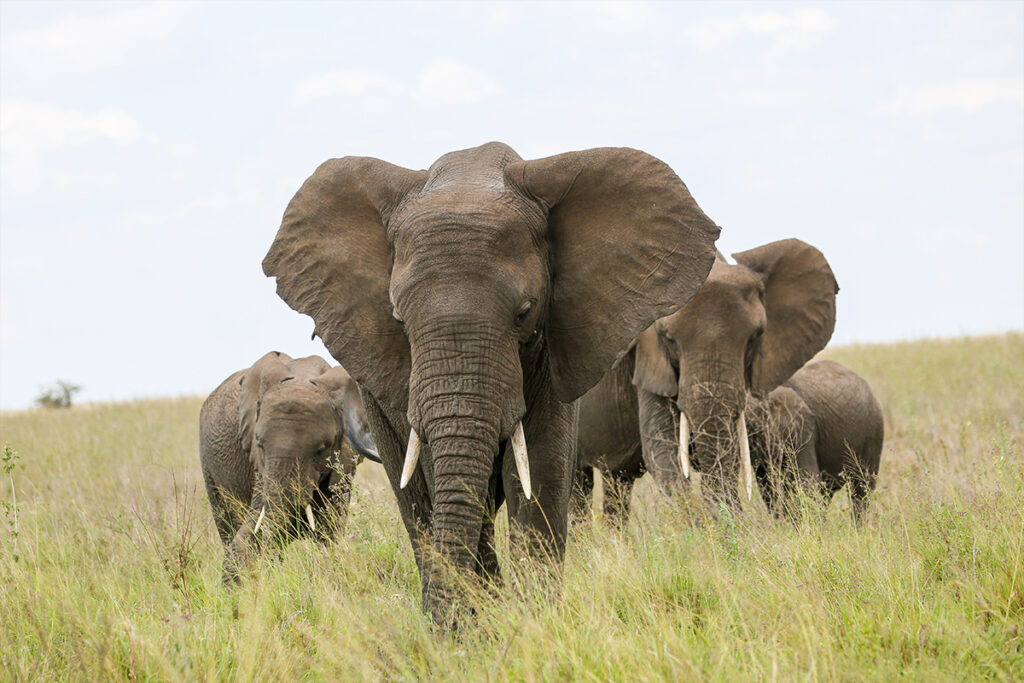As climbers ascend the majestic slopes of Mount Kilimanjaro, a comforting respite awaits in the form of Mandara Huts. These huts serve more than just a shelter; they provide a necessary pause, both physically and mentally. Nestled at the edge of the rainforest zone, they cater to the weary adventurer seeking a tranquil night’s rest.
Historically, Mandara Huts have been a cherished stopover on the Marangu Route, Kilimanjaro’s most popular trekking trail. Established decades ago, they possess a unique blend of rustic charm and practicality. With accommodation for up to 60 climbers, these huts have become an essential feature contributing to the mountain’s acclaimed accessibility.

Mandara Huts: A Gateway to the Roof of Africa
Standing amidst the lush greenery of Kilimanjaro’s Marangu Route, Mandara Huts play a vital role for climbers. These huts serve as the first stop for many adventurers aiming to reach the mountain’s summit. Nestled at over 8,858 feet above sea level, they offer a picturesque view of the vast moorlands. Climbers appreciate the respite as they acclimate to the altitude. The huts not only provide shelter but also foster a sense of camaraderie among travelers.
The structure of Mandara Huts is both simple and effective. Built with comfort in mind, they usually feature shared sleeping arrangements. Some essential amenities are available to ensure a pleasant stay. Climbers often recount their nights spent around communal dinner tables, sharing stories. This unique experience creates lifelong memories for many visitors.
Staying at Mandara Huts is crucial for acclimatization, an important factor in avoiding altitude sickness. Without this essential stop, climbers might struggle to continue their journey. The huts allow time for bodies to adjust to the thinner air. Additionally, guides at the huts offer tips to make the journey smoother. They emphasize the importance of hydration and gradual pacing.
The huts’ environment encourages social interactions among hikers. Travelers from various parts of the world gather here, exchanging laughter and stories. This shared experience strengthens bonds and boosts morale. Connections formed often lead to lasting friendships. The warmth found within these walls echoes long after the climb concludes.
MOUNT KILIMANJARO -DAY TRIP TO MANDARA HUT CAMP SITE
The Strategic Location of Mandara Huts on Kilimanjaro’s Marangu Route
The location of Mandara Huts offers a significant advantage for climbers on Kilimanjaro. Situated at the rainforest’s edge, it marks the transition from dense greenery to open moorlands. This change in scenery is both refreshing and invigorating for hikers. The verdant surroundings also make it an ideal spot for bird watchers. Various species can be seen flitting about, adding to the site’s natural beauty.
Mandara Huts serve as a checkpoint, strategically placed at 2,700 meters above sea level. The altitude here is perfect for acclimatization, giving climbers a much-needed pause. Positioned along the Marangu Route, the huts are easy to access. Trekkers find the route well-marked and accessible year-round. Even during the rainy season, the trail remains navigable, thanks to its well-maintained paths.
Nearby attractions enhance the appeal of staying at Mandara Huts. Maundi Crater, a short hike from the huts, offers breathtaking views of Kenya and Northern Tanzania. This spot provides an excellent opportunity for a side trip and photo sessions. Many climbers also use this area to further acclimatize. Spending extra time in these surroundings helps prepare for the steeper climbs ahead.
Mandara Huts create a perfect blend of accessibility and adventure. Its strategic location ensures that trekkers are well-prepared for the challenges to come. Guided hikes from the huts reveal more about the local ecosystem and geography. The experience becomes more enriching and educational. This unique mix turns a simple rest stop into a memorable adventure.
Features and Facilities Available at Mandara Huts
Mandara Huts offer a range of features designed to enhance the climbers’ experience on Kilimanjaro. The huts are built in A-frame style, providing a cozy yet rustic atmosphere. They can accommodate up to 60 people, divided into several smaller huts. This setup ensures a level of privacy and comfort for trekkers. Shared dormitory-style sleeping arrangements foster a sense of community among climbers.
The facilities at Mandara Huts include amenities essential for a comfortable stay.
- Shared dining halls: These provide a space for communal meals and socializing.
- Cooking services: While climbers can bring their own food, meals are also prepared by the huts’ staff.
- Water sources: Clean water is available for drinking and basic hygiene.
These features make sure that essential needs are met during the stay.
Aside from basic amenities, the huts also offer a few extras that make the stay special. Information boards around the huts provide details about the local flora and fauna. Guides often give short talks or provide trekking tips to help climbers prepare for the next leg of their journey. Basic medical supplies are kept on hand for minor injuries or ailments. These small touches add convenience and safety for everyone at the huts.
One of the highlights of Mandara Huts is the stunning scenery surrounding the area. Climbers can enjoy panoramic views of Kilimanjaro and the surrounding landscapes. Early mornings often treat visitors to breathtaking sunrises over the horizon. Many climbers find this visual reward motivates them for the days of trekking ahead. The overall experience becomes a blend of adventure and relaxation.
The Role of Mandara Huts in Acclimatization for Climbers
Mandara Huts play a critical role in the acclimatization process for climbers tackling Mount Kilimanjaro. At an altitude of roughly 2,700 meters, these huts provide a perfect setting for climbers to adjust to thinner air. This process is vital to reducing the risk of altitude sickness, a common challenge on high-altitude climbs. Spending time here gives the body a chance to adapt. Climbers often sleep here for a night to help their bodies acclimatize.
Acclimatization is all about allowing the body to get used to lower oxygen levels. The huts serve as a resting place for climbers to recover from the initial day’s trek. They also provide an opportunity to learn breathing and pacing techniques. Guides at the huts emphasize walking slowly and maintaining a steady pace. This advice is vital for those looking to summit the mountain.
The benefits of acclimatization at Mandara Huts extend beyond simply resting. The area around the huts offers excellent short hikes, providing practice at higher altitudes. A popular trek is to Maundi Crater, which aids in further acclimatization. These hikes test endurance without straining the body too much. Regular breaks and efforts during these walks acclimatize the body effectively.
Information on altitude sickness and acclimatization is readily accessible at the huts. Informative displays help climbers understand the symptoms of altitude sickness. The ability to recognize these signs early is crucial for climbers. If symptoms worsen, returning to a lower altitude is advised. The huts ensure safety and knowledge are accessible to all.
The huts not only offer practical benefits but also build confidence among climbers. Knowing they are taking necessary steps to acclimatize keeps spirits high. Climbers leave the huts better prepared and aware of their pace and reactions. This mental boost is invaluable as they ascend Kilimanjaro’s challenging slopes. With every step, care taken at Mandara Huts pays dividends in the climb ahead.
Key Takeaways
- Mandara Huts help climbers acclimatize for their Kilimanjaro adventure.
- The huts are located at a high altitude of 2,700 meters.
- Accommodation includes dormitory-style rooms perfect for rest and recovery.
- Basic facilities ensure a comfortable stay during the trek.
- It’s an important stop on Kilimanjaro’s Marangu Route for many climbers.




